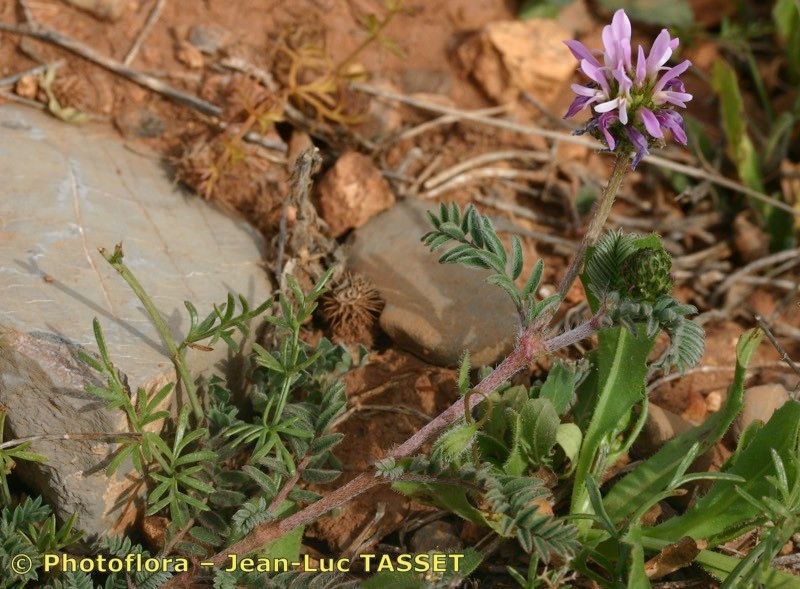Sea Milkwort
astragalus glaux
Also known as: ["Glaux maritimus","Sea Milk Vetch"]
Overview
A small, coastal plant with silvery foliage and small yellow flowers, native to Mediterranean regions.
Benefits & Perks
["drought tolerant","wildlife attractant (bees, butterflies, birds)"]
Botanical Classification
| Phylum: | Magnoliophyta |
| Class: | Magnoliopsida |
| Order: | Fabales |
| Family: | Fabaceae |
| Genus: | Astragalus |
| Botanical Name: | Astragalus glaux |
Plant Characteristics
Basic Information
- Category: Flowers
- Suitable Location: rock gardens, xeriscapes, or sunny borders
- Suitable For:
- Is Weed: No
- Allergenicity: low
Environmental Needs
- Climate: {"temperatureRange":"5–35°C"}
- Hardiness: {"zones":"7–10"}
- Misting: rarely required, only if ambient humidity is very low
- Drainage: Fast-draining to prevent root rot.
- Soil Type: Well-draining, sandy loam with some organic matter; cactus or succulent mix is ideal.
Maintenance Level
- Maintenance Level: moderate
- Toughness Level: moderate
- Pruning Frequency: Annually in late winter or early spring; light pruning can be done as needed.
- Pruning Intensity: Moderate; remove up to one-third of old growth to rejuvenate.
Care Details
Ideal Sunlight Coverage:
Full sun (6–8 hours/day) with tolerance for intense light; adjust for extreme heat by providing partial shade.
Sunlight Tolerance Tips:
Acclimate gradually to intense sunlight; protect from harsh midday sun in summer; ensure good air circulation.
Care Requirements
Care Difficulty
moderatemoderate
Sunlight
full sun to partial shade
Use shade cloth in extreme heat; rotate plant for even light exposure; avoid sudden light changes.
Watering
every 7–10 days during active growth, reduce in winter
Allow soil to dry between waterings; avoid overwatering; water early in the day.
Soil
well-draining, sandy or loamy soil with low organic matter
pH: Slightly alkaline to neutral (pH 7.0–7.5).
Use gritty mix; avoid heavy clay soils; ensure pots have drainage holes.
Temperature
Prefers warm to hot temperatures (65–85°F/18–29°C); tolerates mild frosts but thrives in arid conditions.
Avoid sudden temperature shifts; protect from frost; ensure good air circulation in heat.
Fertilizing
every 4–6 weeks during spring and summer, none in winter
Fertilize lightly; avoid over-fertilization; stop in dormant periods.
Propagation
Methods
Stem cuttings or seed; stem cuttings are more reliable for home growers.
Step-by-Step Propagation Guide
- Take 4–6 inch cuttings.
- Remove lower leaves.
- Dip in rooting hormone.
- Plant in medium.
- Keep moist and warm.
Best Time: Spring or early summer when the plant is actively growing.
Environment
Warm (70–75°F/21–24°C), high humidity (70–80%), and bright indirect light.
Medium
Well-draining mix of perlite and peat moss or cactus soil.
Hormone
Rooting hormone is recommended for faster root development.
Timeline
Roots develop in 3–6 weeks; establish in new pot within 2–3 months.
Tools Needed
Pruning shears, rooting hormone, small pots, well-draining medium.
Quick Tips
Use healthy, non-flowering stems; maintain humidity with a plastic cover; avoid direct sun.
Pruning & Repotting
Pruning Guide
Method
Pinch back tips for bushiness; cut back leggy stems to encourage branching.
Pruning Plan
Prune to maintain shape, encourage bushiness, and remove dead or weak growth.
Tools
Pruning shears, sharp knife, disinfectant.
Checklist
Disinfect tools; prune dead/damaged growth; shape plant; avoid over-pruning.
Repotting Guide
Best Season
Spring, before active growth begins.
Pot Size
Move to a pot 1–2 inches larger in diameter; ensure good drainage.
Method
Remove plant gently; trim roots if needed; use fresh, well-draining soil; ensure drainage holes are clear.
Suggestions
Repot every 2–3 years or when roots fill the pot; beneficial for growth and soil refresh.
Checklist
Prepare new pot; trim roots; use fresh soil; water lightly after repotting.
Advanced Care Tips
Watering Mastery
Watering Checklist
Check soil moisture; water deeply; ensure drainage; avoid wetting leaves.
How to Apply Water Properly
Water thoroughly at the root zone until water drains from the bottom, ensuring even moisture without waterlogging. Avoid wetting foliage.
Watering Schedule Tips
Water deeply once every 1–2 weeks during active growth, reducing frequency to monthly in winter. Adjust based on rainfall and soil dryness.
Soil Improvement
Add perlite or coarse sand for drainage; incorporate compost for fertility; ensure good aeration.
Temperature Stress Management
Signs of Temperature Issues
Wilting, leaf drop, or browning edges in excessive heat; stunted growth or leaf yellowing in cold stress.
Cold Stress
Slows growth, reduces photosynthesis, and may cause root damage in prolonged cold or frost.
Solution: Move to a warmer location; use frost cloth for protection; ensure good drainage to prevent root rot.
Hot Stress
Leaves may scorch, wilt, or drop; growth may slow due to excessive transpiration.
Solution: Provide afternoon shade; increase watering frequency; use mulch to retain soil moisture.
Fertilizing Guide
Fertilizing Checklist
Use diluted fertilizer; apply during growing season; avoid winter feeding.
Fertilizing Method
Use a balanced, water-soluble fertilizer diluted to half strength every 4–6 weeks during growing season; avoid fertilizing in winter.
Common Problems & Solutions
Toxicity Warning
Cats
Non-toxicAstragalus glaux is not known to be toxic to cats. There are no reported adverse effects associated with its ingestion by felines.
⚡ Toxic If:
if eaten
Dogs
Non-toxicAstragalus glaux is not known to be toxic to dogs. There are no reported adverse effects associated with its ingestion by canines.
⚡ Toxic If:
if eaten
Humans
Non-toxicAstragalus glaux is not known to exhibit toxic effects in humans. It is generally considered safe for consumption in typical amounts.
⚡ Toxic If:
if eaten
Frequently Asked Questions
Q: Is Astragalus glaux suitable for coastal gardens?
A: Yes, it thrives in coastal conditions due to its salt tolerance.
Q: Does Astragalus glaux attract pollinators?
A: Yes, it attracts bees and butterflies with its small yellow flowers.
Q: How often should Astragalus glaux be watered?
A: It is drought-tolerant and requires infrequent watering once established.
Quick Reference
| Family: | Fabaceae |
| Care: | moderate |
| Light: | full sun to partial shade |
| Water: | every 7–10 days during activ |
Get Expert Care Tips
Download the Plantious app for personalized care reminders and plant identification!
Google Play App Store





